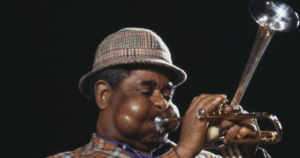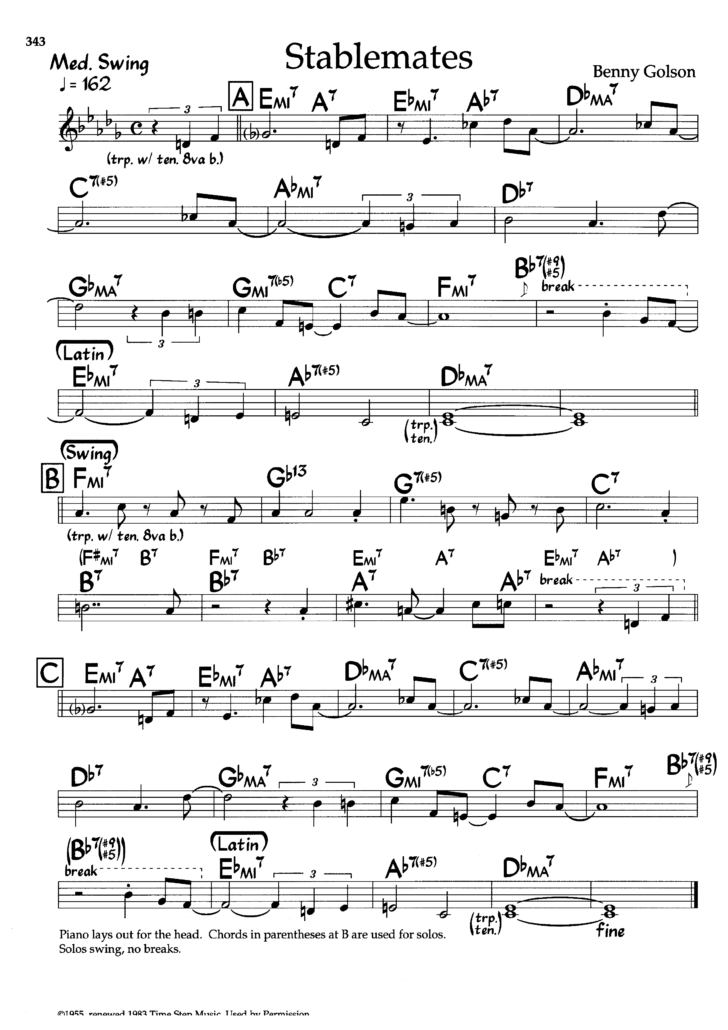Improvisation Wisdom from Dizzy Gillespie, part 2
In the pursuit of musical excellence, we often encounter challenges that prompt us to explore innovative techniques. Building on the wisdom shared by the legendary Dizzy Gillespie, I recently engaged in a transformative conversation with my teacher, revealing the nuances of rhythm-centric improvisation, especially on harmonically intricate tunes. This revelation unlocked a treasure trove of insights, reshaping my approach to soloing.
Harmonically Sophisticated Tunes: A Balancing Act
Navigating through harmonically sophisticated tunes during improvisation requires a delicate balance. The intricate chord progressions demand a significant share of our mental bandwidth, sometimes leaving little room to focus on the rhythmic aspects of our solo. It was during this juncture that my teacher provided a pivotal piece of advice: combine harmonic elements wherever possible.
Boiling Down Harmony: A Game-Changing Insight
Reflecting on this counsel, I recalled the wise words of Joe Pass and my former teacher, Jack Wilkins. They advocated for a method of simplifying complex progressions. Joe suggested reducing a II-V progression to just a V, while Jack recommended concentrating solely on the II chord. These insights were eye-opening, demonstrating how a seemingly intricate progression could be distilled into a more manageable mental framework.
“Stablemates”: The Perfect Canvas
To put this theory into practice, I chose the Benny Golson composition, “Stablemates,” known for its relative harmonic complexity. I embarked on the task of mentally restructuring the chords, aiming to streamline the improvisation process. Below is the original chart of Stablemates.
And here is 1 chorus of improvisation where I’m thinking only about the harmony. As you will see, there’s not much in the rhythmic versatility department.
Now, here is a version of how the tune could be mentally distilled. The simplified framework serves as a way to free up mental bandwidth so that I could feel/think more rhythmically. I boiled down the II V Is to just Is, and even the III VI II V Is to just the I. (By the way I don’t use lower case for roman numerals of the minor chords because I follow the notation used in John Mehegan’s “Tonal and Rhythmic Principles.”)
And here is another chorus of improvisation where I’m not trying to hang on to each chord change so carefully. I tried to tap into the rhythms that naturally wanted to emerge, and got some rhythmic motifs going.
The Before and After: A Transformation
Ideally, a performance that follows Dizzy’s method is one that is not only musically compelling but also brimming with rhythmic vitality and expressive freedom. The process of boiling down the harmony mentally liberates the improvisation, allowing it to breathe and flow effortlessly.
Here is one more take of the entire tune, including the melody. It’s freeing to think rhythmically, and there occasions in which outlining the changes (thinking more harmonically) felt good to do. I suppose it’s always a balance of rhythm, harmony & melody.
Embracing the Rhythmic Revelation
This revelation underscores the profound impact that rhythm-centric thinking can have on improvisation. It is a testament to the dynamic interplay between harmony and rhythm, offering a fresh perspective on how we approach complex tunes.
As musicians, we are not bound by the limitations of intricate progressions. Through thoughtful simplification and a focus on rhythm, we unlock a world of improvisational possibilities. Dizzy Gillespie’s rhythmic wisdom continues to inspire, reminding us that, ultimately, it’s the rhythm that breathes life into our music.
Here’s to the ever-evolving journey of musical exploration and the boundless creativity that emerges when we embrace rhythm as our guiding force.
—
If you want to set up a free trial lesson either in person or online, simply fill out this form and we’ll get back to you within 24 hours. You’ve got nothing to lose and an amazing musical world to gain. 🙂




